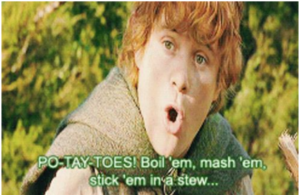By Hannah Cunningham
To make an A with the least amount of effort possible was my artform and I the artist. In my teen years
through my early twenties, I reveled in the fact that I could do very little and almost always get the
desired outcome. I thought it silly to do more or to work harder when I could have so much more time to
follow other pursuits, if I simply continued to hone my skills in the art of procrastination. Upon my
college graduation, I walked across the stage to get my diploma with the accolades of honor roll and
summa cum laud, but I knew the truth. I had hoodwinked everyone including myself. I never outright
cheated, but I definitely manipulated the system and while I at first was quite proud of my ability to do
this, I later regretted having put so little of the knowledge of my degree into long term memory.
I knew next to nothing when compared to what could have been gained, and now as a teacher I strive to create a classroom environment where such “artforms” do not thrive.
One example of this is how I teach my high school students to write.
My goal is to impede any tendencies towards apathy and laziness as much as possible. I then strive to instill in them a desire for creativity, and high achievement.
Two educational weapons I wield to achieve these results are that of
enforcing hand-written work within the classroom and in giving very specific expectations.
I do not allow my students to type anything unless I have first seen them write it by hand. This is a very
firm rule in my classes for a few significant reasons. Not the least of which is that it drastically minimizes
the temptations of ChatGPT and laziness in all its forms. It takes away the distraction of a computer and
because the work must be done within the class, there is no room for the “art of procrastination” to
bloom and grow.
I set expectations for a new writing assignment through two main means.
One is that of showing them both a bad example and a good example. The second comes from a well-written rubric.
Allow me to illustrate.
Earlier in the semester, my 9th grade students were needing to work on forming strong thesis statements,
as well as pushing their minds to write with vivid description. They knew how to write a well-structured
paragraph and even decent essays, but I was sick and tired of being bored by them. They needed to
branch out and push themselves. I began the lesson by showing them two different paragraphs all about
potatoes. It succeeded in capturing their attention, for who doesn’t like a good potato?

I. Potatoes are awesome. They can be used for many things. You can use a potato to make
a clock, which is really cool. Potatoes can also make nice house plants. However, the best use of them is for food. Potatoes are super delicious and you can eat them in many different ways. I like french fries and hash browns a lot. Potatoes are truly incredible.
II. There is nothing quite as magnanimous as a potato, for they are perfect for both tasty meals and science experiments. These grand little tubers are extraordinarily versatile. You can stick a couple of copper wires in them to convert chemical energy into electrical energy and bam! You get a potato clock! Or throw one in a jar of water, and you’ll have a vine wrapping around your home in no time. Yet the best application of a potato is that of food. There are casseroles, baked potatoes, hashbrowns and more! They are delicious. In the words of Samwise, “Po-tay-toes! Boil ’em, mash ’em and stick ’em in a stew.” These tubers are precious indeed.
The students had to discuss the differences and use the rubric to grade the paragraphs.
They determined that the first paragraph would get a C and the second an A. They also concluded that the main reason for this large difference in grades came from details. One was interesting, and the other was not.
The results of taking the time to clearly set the expectation for an A assignment worked beautifully.
They of course, were required to use the same rubric to grade their own work before turning it in.
Assignments, where students truly put forth an effort, are such a joy to grade when compared with the
alternative.
I hope that continued exercises like this will help them to build an intolerance for mediocre work, and
that the wasteful “arts of procrastination” will not form deep roots in their lives as it once did mine.
